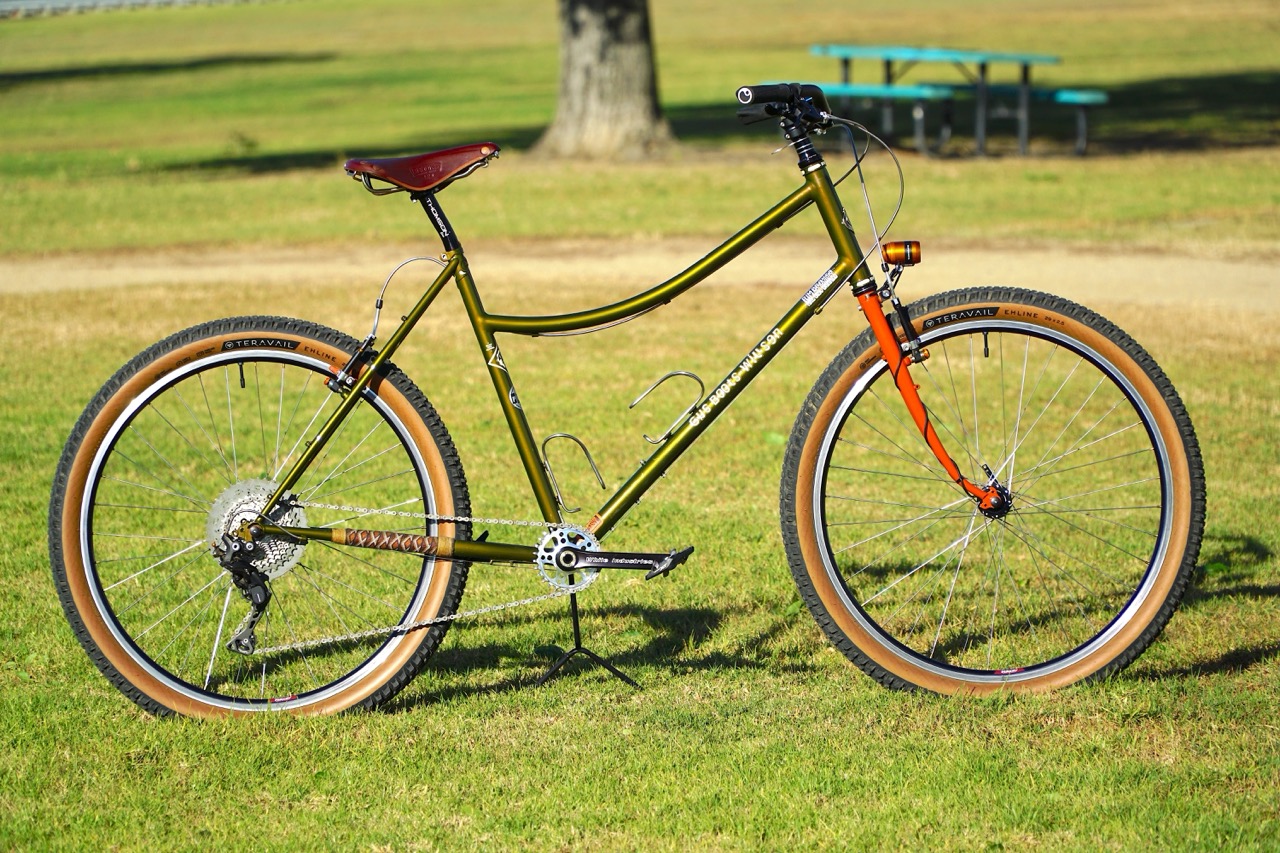Ok, here it is. A lighthearted, albeit detailed review of the Rivendell Gus Boots Willsen and the brands that contributed to the build. This bike defies categories and is hard to label. Grant Petersen prefers to call it a “Hillibike”. But, really for all intents and purposes, it’s an all-terrain bicycle (ATB).
I use it as my sole mountain bike. But, whatever you want to call it, it’s an enjoyable bicycle to ride.
Legendary Bike Designer Grant Petersen
Okay, let’s touch a bit on Grant, as he’s a big part of this story.
Grant started Rivendell Bicycle Works out of his garage, back in 1994. Rivendell came to fruition after Grant’s successful run as the “man in charge” of the U.S. bicycle division of Bridgestone, producing some influential and iconic bikes in the late 80s and early 90s.
I was first introduced to Grant through his cleverly written, beautifully photographed, and illustrated mountain bike catalogs while shopping for my first real MTB in 1989-90.
The bikes were light and nicely built and didn’t follow the “trends” of the time. Grant was spec’ing the bikes part by part, instead of spec’ing them by “gruppo” like the other brands. This gave the bikes a more “custom built” feel to the line.
I saw, back then that Grant was a free thinker, not bound by what the “rest of them” were doing in the industry… he was a maverick, almost defiant in doing his own thing. I was hooked.
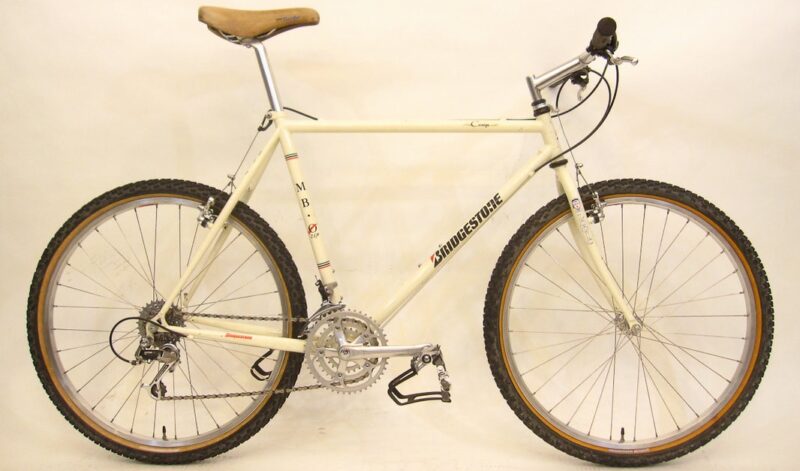
But, although I really wanted a Bridgestone MB-0 (MB Zip), I just couldn’t afford one. So, bought a brand new, shiny ’89 Shogun with Shimano 7-speed “push-push” indexed trigger shifters. I continued to collect the catalogs and pine over that MB-0…
Why Rivendell?
I discovered Rivendell around 2014, at a time in my cycling where I was looking for something dramatically different. I had done all of the racing I would do back in the day (XC and Downhill).
And frankly, I was done with the feeling of trying to be competitive with my friends (and strangers, for that matter) on my recreational rides. I’ve been riding that way since the early 90s and it became exhausting.
So, after drooling over the Rivendell bikes, for a long time, I decided to finally pull the trigger on my Clem Smith Jr in RBW Blue back in November 2021. If you want to nerd out on that bike, check my blog post on it here.
Why the Gus Boots Willsen?
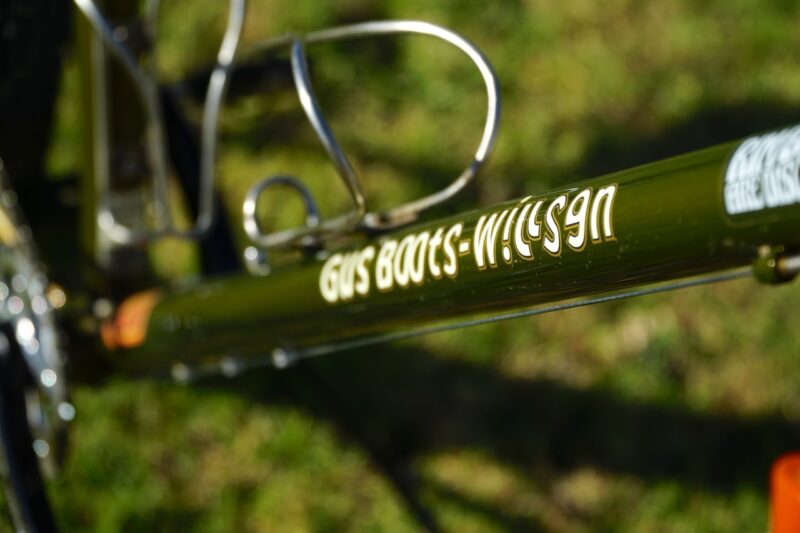
After putting in almost 1000 miles on my Clem, and loving all of them, I decided to sell my only mountain bike and buy the Rivendell Gus Boots Willsen in March of this year.
The Gus would be Rivendell’s equivalent of a mountain bike, although Grant prefers to call them Hillibikes, leaving the other nomenclature for the rest of the mainstream bike brands.
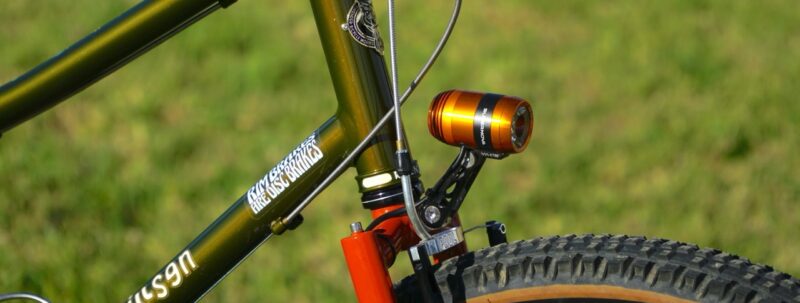
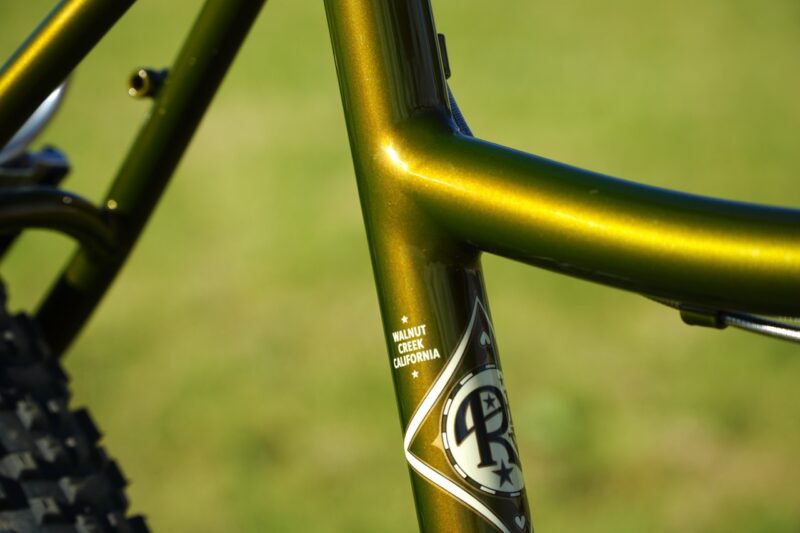
Who is Gus Boots Willsen?
With the heart of an early mountain bike, the Gus is the only bike in Rivendell’s line that came with a threadless fork and a 1 1/8″ headtube. I was drawn to everything about this bike, including the non-sensical name. I couldn’t find anything about why Grant would name a bike Gus Boots Willsen.
So, I went straight to the horse’s mouth, so to speak.
At first, I sent an email to Will Keating, the General Manager of Rivendell and a very busy guy. I hadn’t heard from him yet, but finished the piece and needed an answer, so I called Rivendell directly and spoke to Vince.
Vince didn’t know, and Grant wasn’t in to ask. But Vince tried and guessed that “maybe it was a way for Grant to differentiate the bike further from all of the macho and aggressive nature of mountain biking”. That sounded good… and made sense to me. Thanks, Vince!
I was going to run with that. But, when I got home from a short trip, I found Will’s response in my inbox. I was excited to hear why Grant chose such a unique name. But, upon opening my email, I disappointingly read that there actually was no reason for the name… “Grant just made it up”.
Despite my strange disappointment in that answer, it also made sense to me, and I found some pleasure in it. Grant doesn’t think about bikes like the rest of us do, obviously. He picked a wonderfully unique name for a wonderfully unique bicycle.
To me, judging by the instrument decals on the top tube and non-drive chainstay, and the fact that the face on the headtube (I’m assuming is Gus, himself), has a harmonica up to his mouth… to me, Gus is a New Orleans Jazz man.
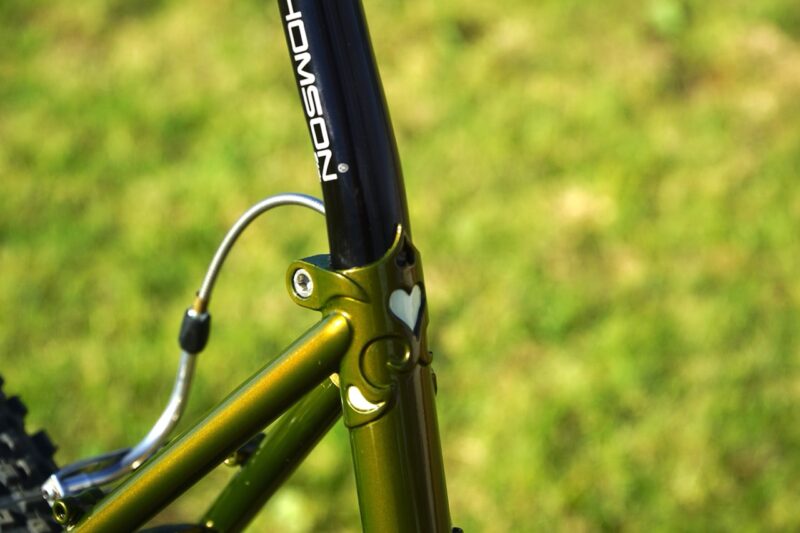
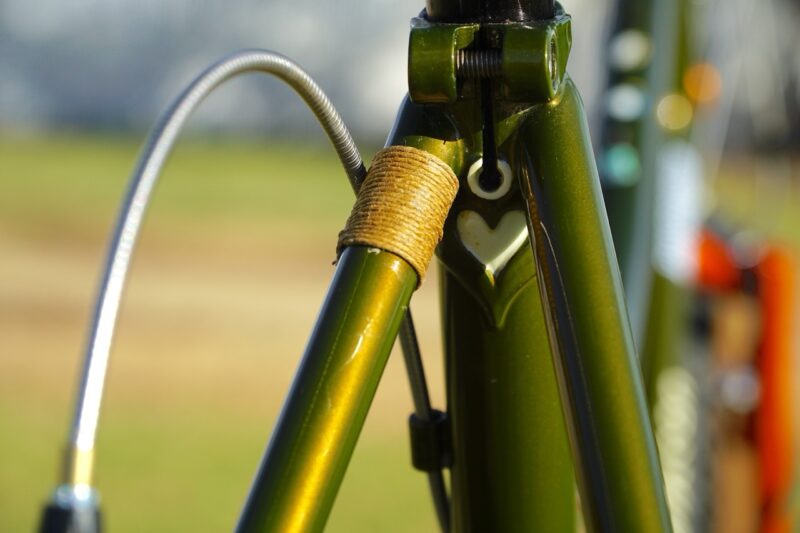
Still Hand Made
The Gus’ frame and fork are made of chromium-molybdenum steel (CrMo) and are both lugged and fillet-brazed in their construction. The frame is made in a Taiwanese factory that is known for its prowess when it comes to fillet brazing, lug work, and bending larger diameter tubes.
Gus was made with a tube set that sports slightly larger diameter tubes with slightly thicker tube walls than the other Rivendell bikes in the line. These few differences, make it worthy of riding it on really rough terrain. Which I do.
For those of you who need to know stuff like this, my Gus with no saddle bag or handlebar bags mounted, weighs in at 26 lbs. That’s pretty impressive considering the size of the bicycle.
Look, this obviously isn’t the bike if you want to race downhill/XC or do any crazy “high-speed/high-risk” type of riding shenanigans. And, if that type of riding is your jam, that’s great. But it also means that you’re probably not even reading this. And that’s fine as well.
Notes from Grant on Geometry
From the Gus info page on the Rivendell site:
“We may show the geometries online, but may not. I have mixed feelings about that because I think they mislead people into thinking they can tell how a bike rides by its numbers, and numbers that vary from what any given reader’s norm tends to come off wacky, even when they make super sense“
If you are curious about what size Rivendell bicycle you should choose, just call. The extremely helpful and passionate staff will guide you through it. Hint: it will be almost entirely based on your PBH (Pubic Bone Height). I’m 6’1″ (PBH: 87cm), and my Gus is 57cm.
The Story of the Orange Fork
I wanted the new orange Gus, I loved how it looked, but that color was out of stock and not returning. The final shipment of the orange color was arriving at Rivendell and all of the 57cm Gus Boots had been presold and accounted for.
I was too late.
In a desperate act, I reached out to Will at Riv to see if there were any left in size 57cm. He informed me that there was a frameset available, but that they were required to hold on to it for a replacement if one got damaged in shipping.

He was kind enough to put my name on it just in case, with no guarantees though. I still got my hopes up.
After a few weeks, I was informed the available frame was gone. Will told me he did find a lone 57cm from last year’s model (in Riv’s beautiful Moss Green) hidden in storage, but couldn’t find the matching fork.
After a long search for a matching green fork yielded no results, Will and I started to brainstorm possible solutions. He suggested I get the green Gus with the newer orange fork.
Hmmm… I was hesitant, thought about it, and since I wanted to experience the Gus, I said “ok, let’s do it”.
Just to be crystal clear, Rivendell doesn’t mismatch frame parts upon request. This was a rare occasion where the ends justified the means.
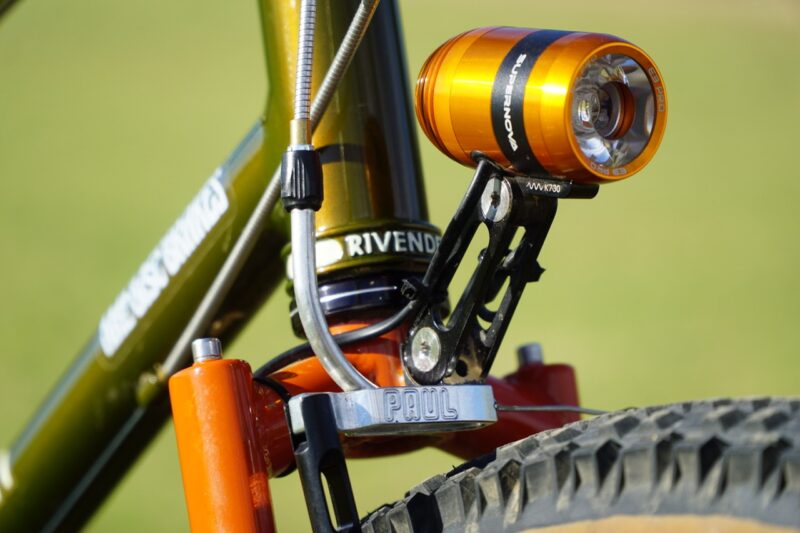
As it turns out, I love the orange fork on my Gus, it differentiates it from all others. It adds to the bike’s already one-of-a-kind uniqueness. I love it, and I am forever appreciative of the effort, thanks Will!
Okay, we’re moving on.
Building It Up
The pictures of this frame color do it zero justice. Trust me, it is an absolutely beautiful Dark Moss Green that takes on a different life in the sunlight. More on this later. On to the build.
Let’s check out what brands helped me spec out this beauty… starting from the bottom to the top.
Velocity USA:
Velocity USA is located in Grand Rapids, Michigan, and consists of 14 year-round employees. All of their rims are made here, in the USA. They get their rim extrusions from Profile Precision Extrusions in Arizona. They roll, drill, anodize, build, and distribute their rims and wheels from their factory.
I reached out to Velocity and they were happy to have their Wheel Department hand-build up a set of Velocity Cliffhangers for this build. I chose to use their own, self-branded front dynamo hub and the White Industries MI5 polished rear hub that was shipped to them directly from White Industries.
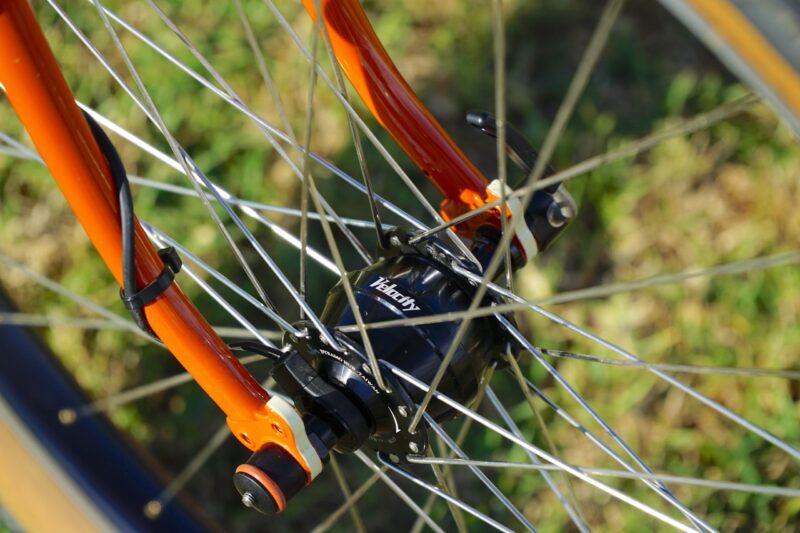
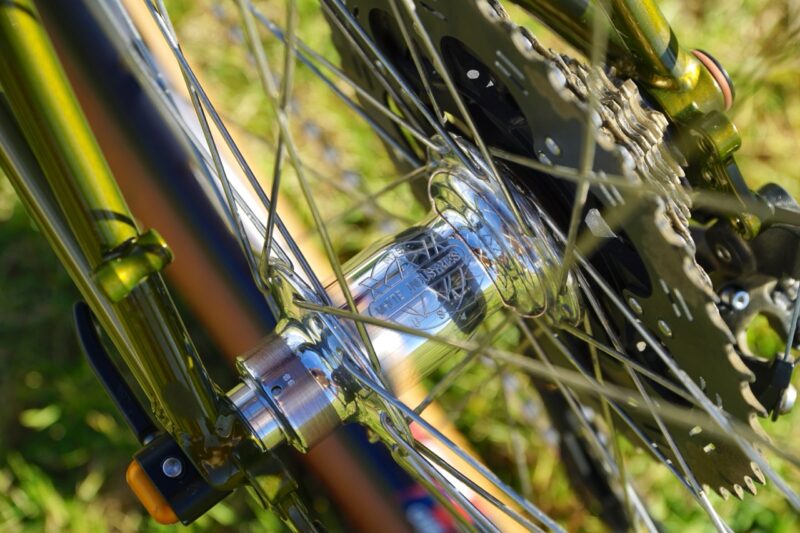
They didn’t have a silver dynamo hub, so I swapped it for a black one. Considering the mismatched fork on the Gus, it just seemed to make sense.
The Cliffhangers are great rims that are strong (I use another set on my Clem Smith Jr.). They are often used when building up a set of wheels for touring. The Cliffhangers for this build are 700c, black, and have 36 holes for added strength and future bikebacking excursions.
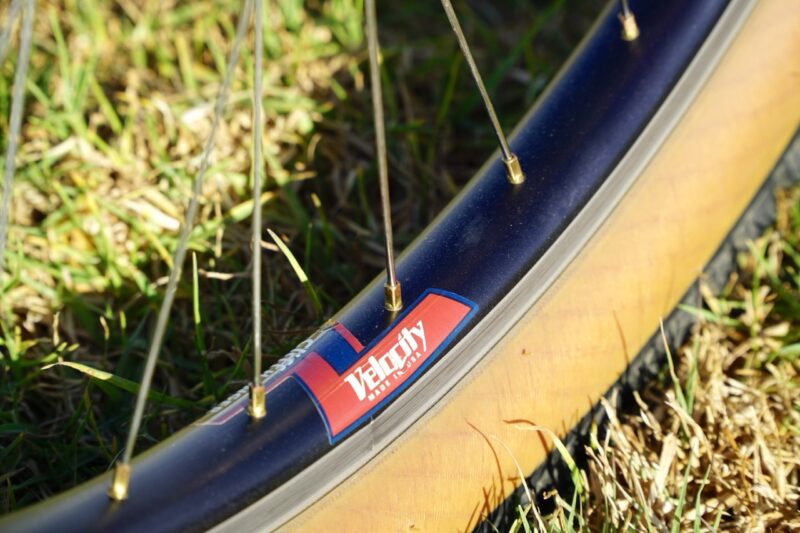
Cliffhangers have an internal width of 25mm and are intended for rim brake application with a machined braking surface. They were built using double-butted stainless spokes and Sim Works’ raw brass nipples. The black rim with brass nipples looks amazing.
I have them set up tubeless, and in the first 300+ miles I’ve stacked on them, they’ve been without any issues, whatsoever.
Teravail:
The Ehline was a tire I’ve wanted to run for a while. And the Gus was the perfect bike for them. I picked out the 29 x 2.5″ tan wall, with the supple sidewalls. This. Tire. Is. Awesome. The side wall is supple but not overly compliant like some tend to be under my weight.
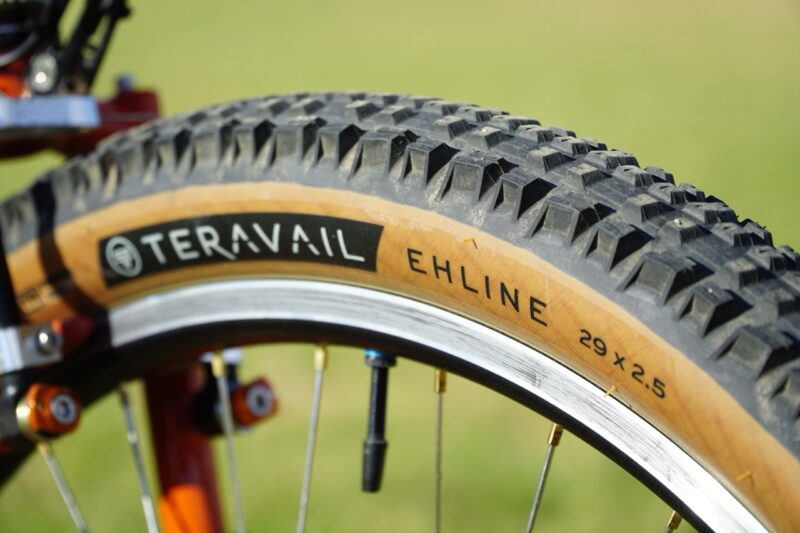
I’ll get bold and say that it might be my favorite off-road tire… period. I like them better than Teravail’s Honcho which I reviewed a while back. It’s for sure a better all-round, multi-surface tire. And make no mistake, I ride the Gus, exactly as I did my Surly Krampus, so I can say that these tires perform exceptionally well off-road.
The Gus lends itself to be ridden on whatever surface you want and pretty efficiently, I might add. these tires didn’t seem to have any real negatives, even on lengthy rides on paved roads and trails.
Tumbleweed Bikes:
On another bike, I used to run the beautiful, heat-treated, triple-butted, raw chromoly version of their Persuader Bar in the 800mm width. I liked it a lot as it was compliant and comfortable. It had the right amount of back sweep (30 degrees) and a decent rise (50mm). But, boy it was heavy (638g).
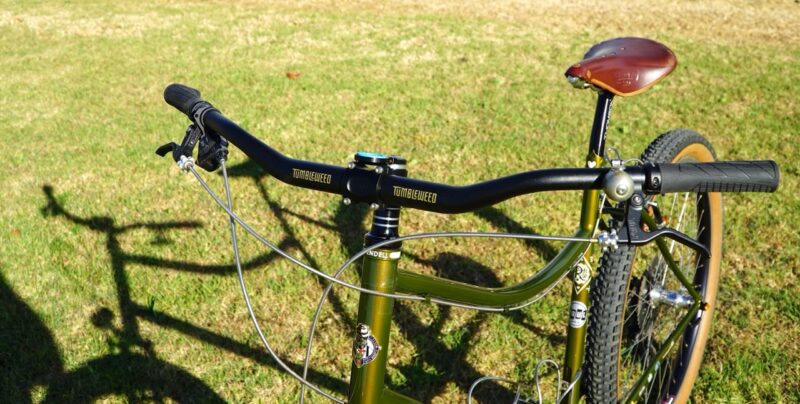
I’m not a weight weenie, but when looking for a bar to use for this build, I saw that Tumbleweed had an aluminum version of the Persuader Bar. I wanted to use that for the Gus build.
So I reached out to Daniel at Tumbleweed. The aluminum version of the Persuader bar had the same dimension, except the sweep was now 31 degrees. Weighing in at 411g now in the same width (800mm) the bar is a lot lighter.
The ride on the alloy version isn’t as rough as I thought it would be. Within the first few miles, I’d quickly stopped noticing any tangible difference in compliance between the two versions of the bar.
Paul Component Engineering:
I would consider the Gus Boots, for the lack of a better label, a bicycle that is of the neo-retro ilk. That’s due to the rim brakes, quick releases, and 135mm rear spacing. Things of the past for some.
Luckily for me, I don’t care about that kind of stuff. We used to run all of these standards at one point in our past bike lives. Our cantilever, and “V” brakes stopped us perfectly fine back then.
Our QR hubs held up to a lot of abuse without failing. Don’t get me started on the 135mm rear spacing. Look, we’re still here to talk about it, and that speaks volumes. We are fortunate that companies like Paul Component Engineering still make high-quality bits for these types of bikes.
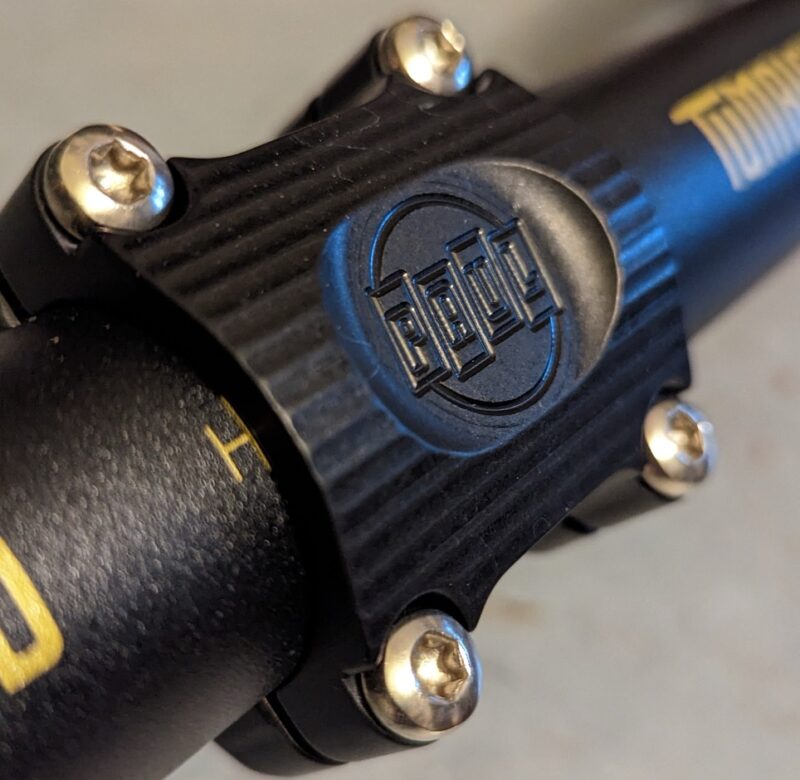
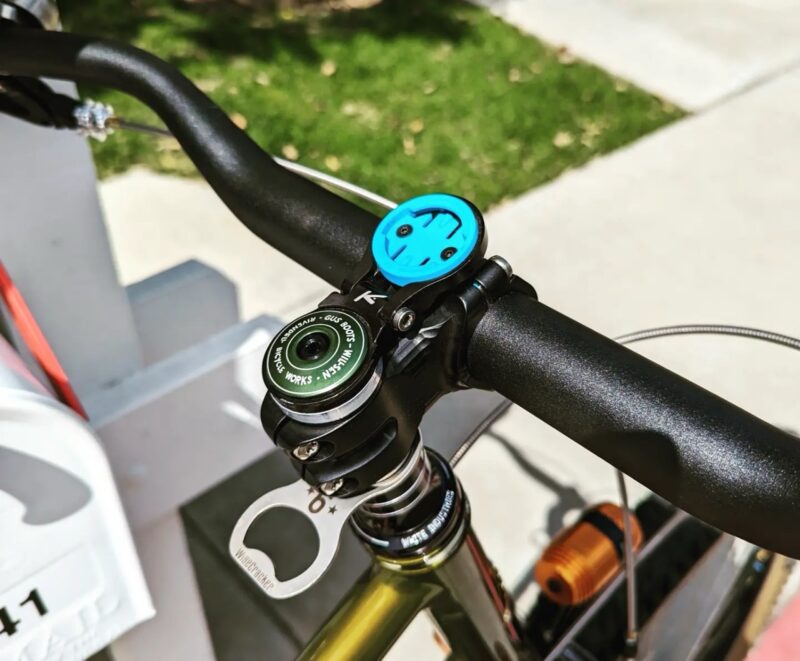
For this build, Paul Comp supplied their beautiful black Boxcar Stem in the 50mm flavor.

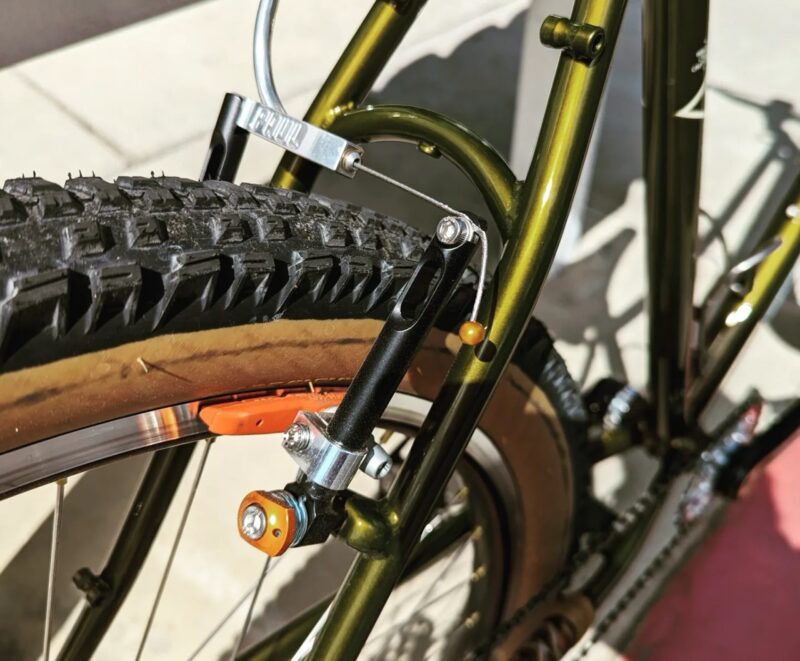
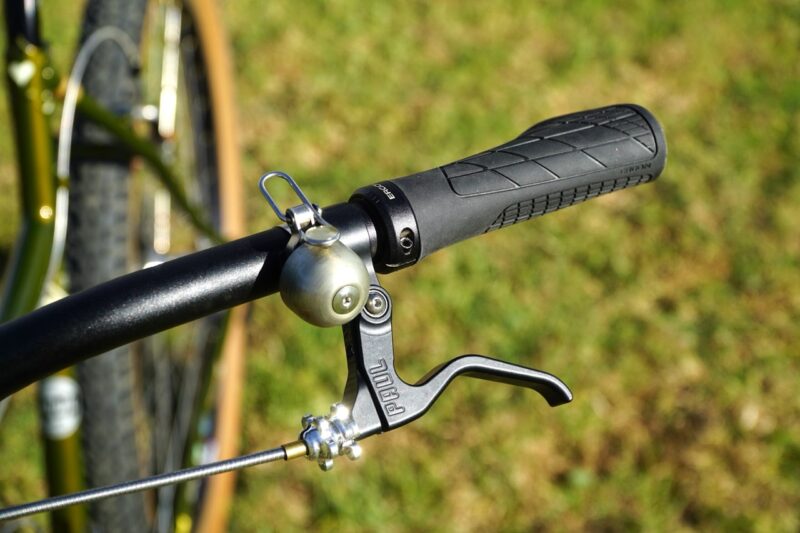
They also offered their black Love Levers and their gorgeous linear-pull Motolite brakes. The Motolites pop in the black anno with the adjuster nut in the orange anno. These brakes are powerful, modulate perfectly, are silent, and work really well.
They’re easy to adjust and set up, and the pads seem to be the perfect compound for where I ride.
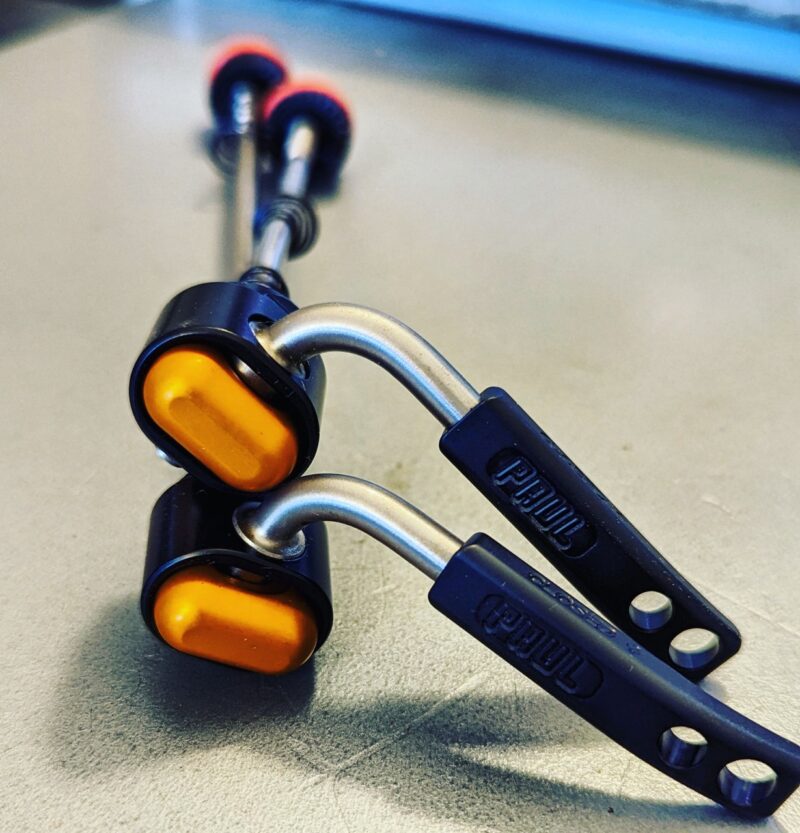
To top it off, they sent a pair of their 5mm Quick Release Skewers in the black/orange combo, obviously.
Velo Orange:
I wanted the build to be special down to the little details, so I reached out to Velo Orange, as they have what I need when it comes to finishing a special build. They offer everything you need to build a bike, including their top-notch frames.
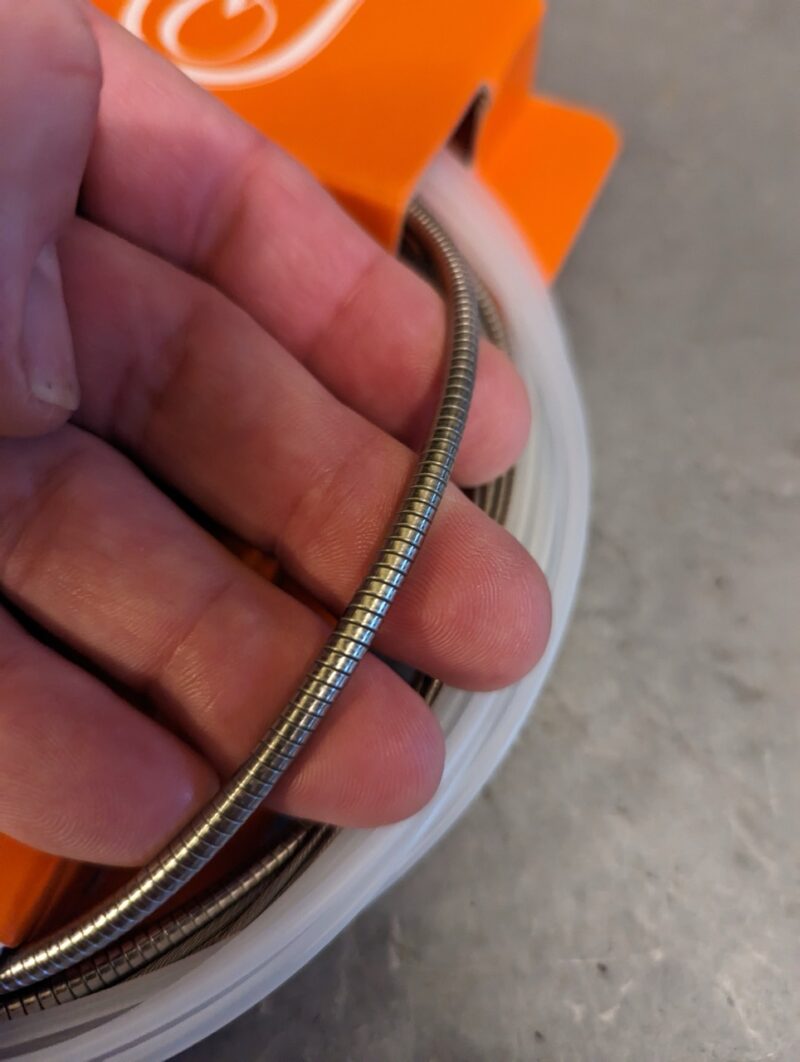
For this build, I turned to them for the unglamorous stuff, like shift and brake cables, but also for something that would set this build off. Something different, that you don’t always see on a build.
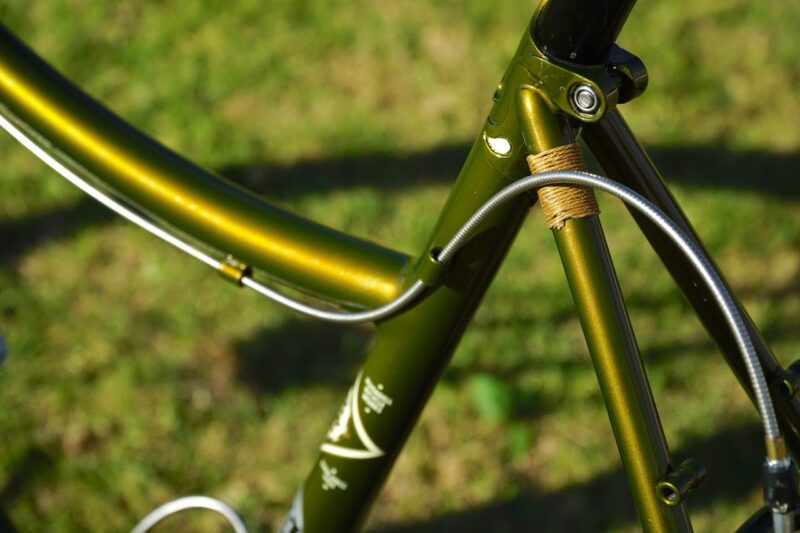
I chose their Retro-Style, Stainless Wound Kit for both the shift and brake housing. I also wanted to run solid, raw Brass Housing Caps because, well… brass means class, that’s why.
Supernova:
Wanting the same durable, water and dust-proof dynamo light on the Gus that I ran on the Clem Smith Jr., I requested the Supernova E3 Pro 2. They were kind enough to shoot one over to me in anodized orange, and frankly, it looks amazing on the bike.
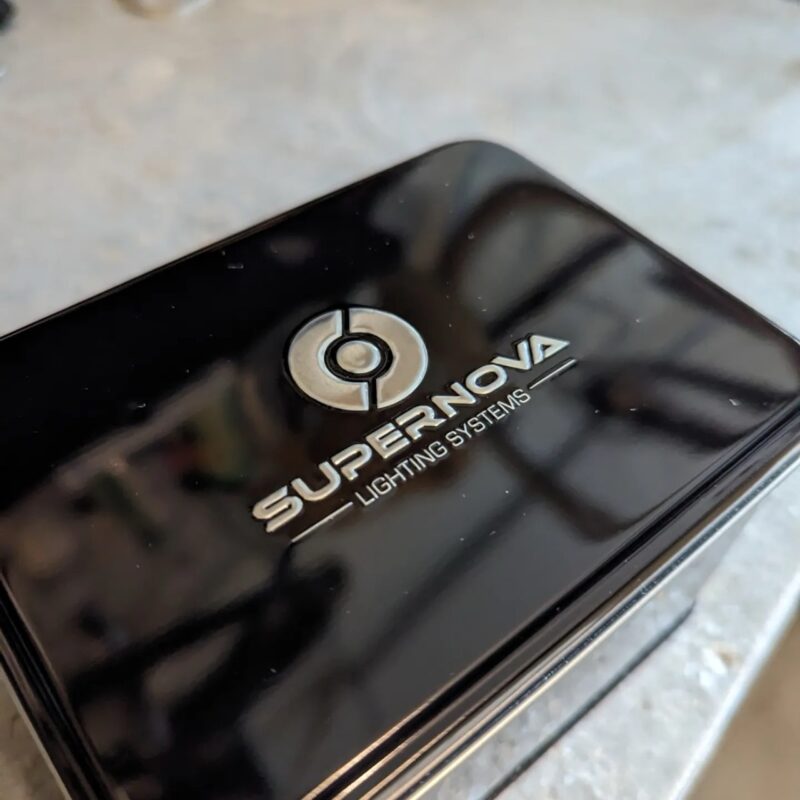
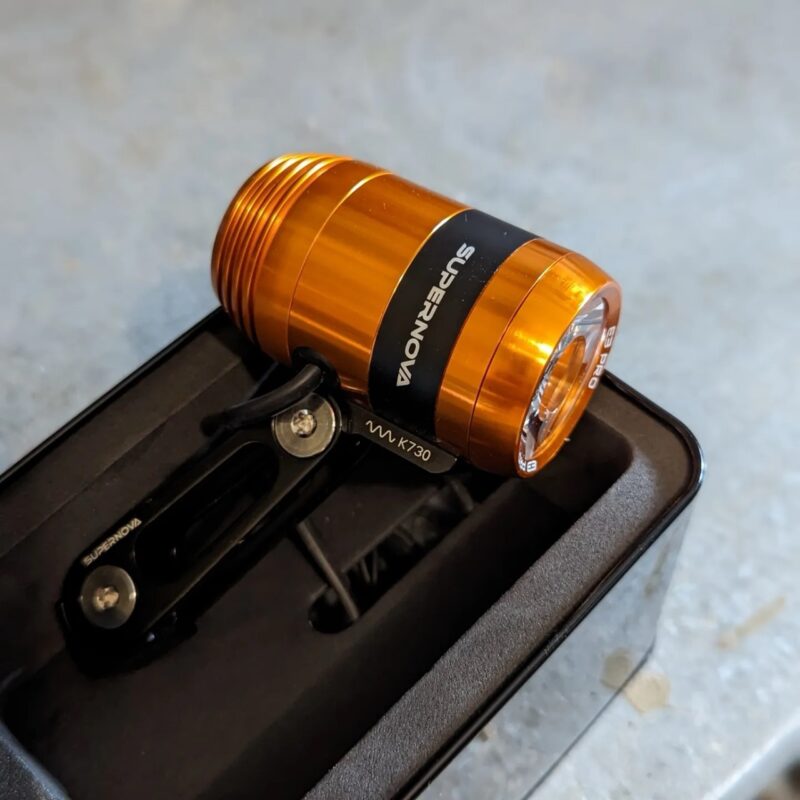

The light is ultra-durable, and rugged enough to have on a mountain bike all of the time. It’s always proven to be bright and reliable even at slow speeds. The E3 Pro 2 is switchable on the back of the unit. It even sports a bright shining logo as a side marker for added safety. It also carries a 5-year warranty.
White Industries:
I have quite a few White Industries parts on all of my bikes. It’s safe to say that I’m a fan of their high-quality products, attention to detail, and the aesthetics of their parts, and I’m a huge fan of the people who are employed there.
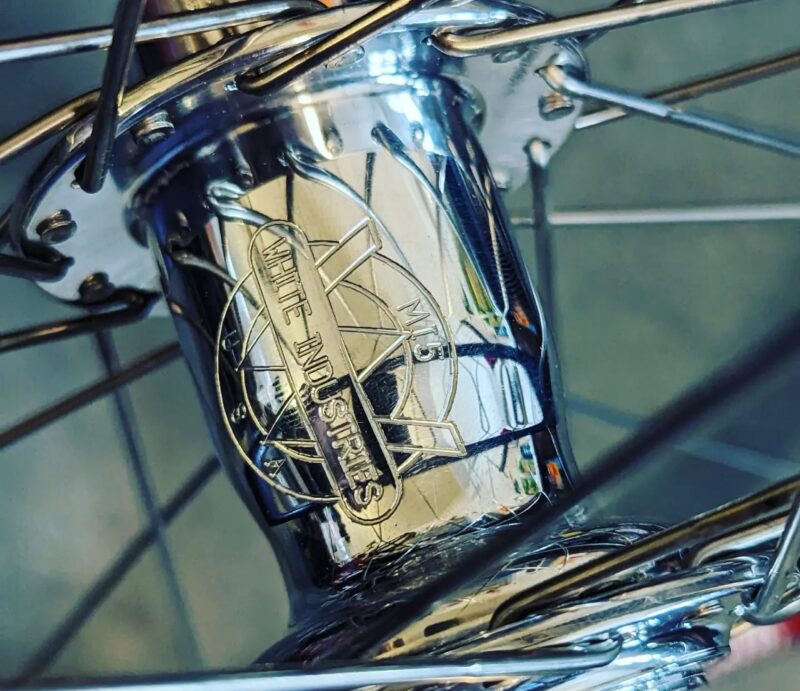
I reached out, and they hopped right on the project. They offered their MI5 Polished Rear Hub that was sent straight to Velocity USA to use for the rear wheel build.
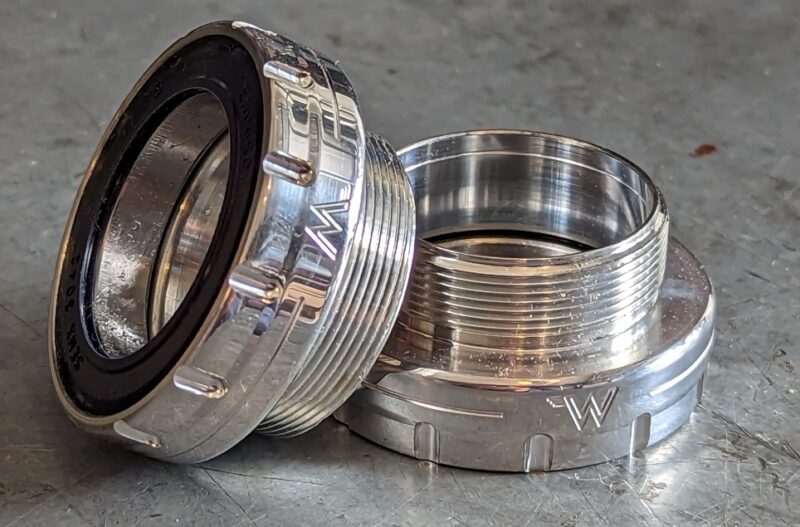
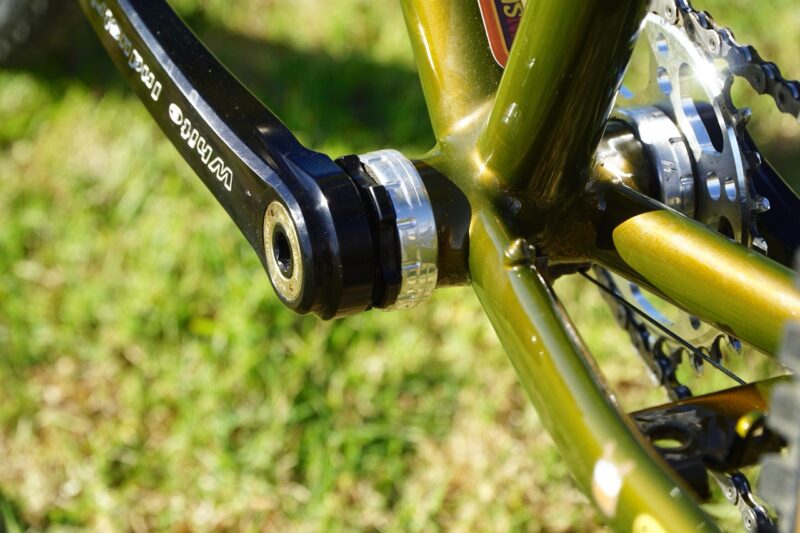
The Bottom Bracket is their External BSA Bottom Bracket, in silver. It’s sized to run a 30mm spindle and has external bearings. It looks amazing and was easy to install.
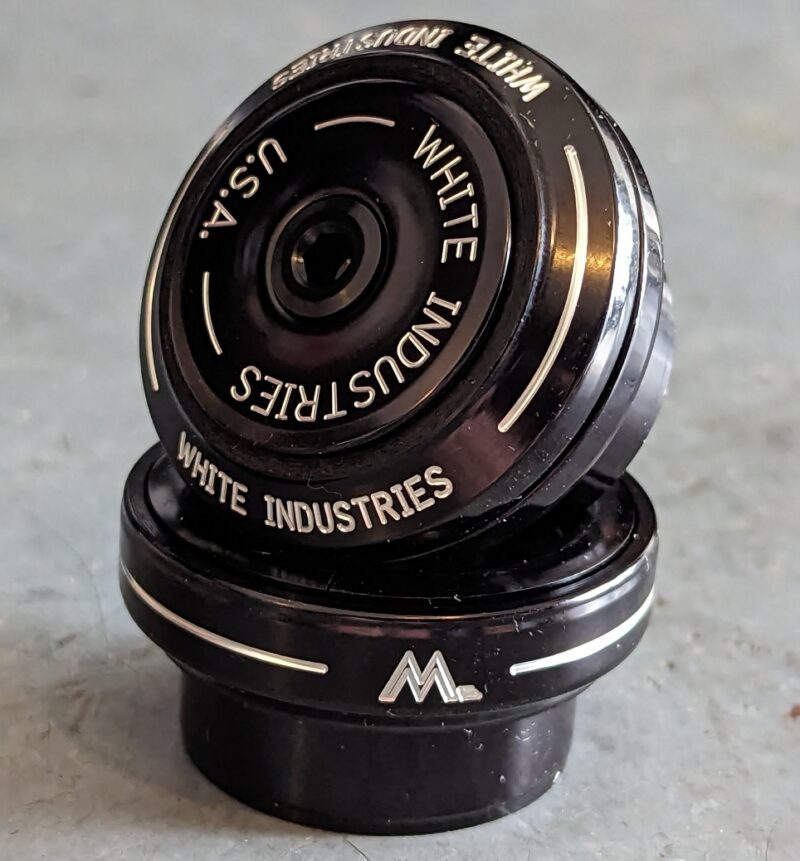
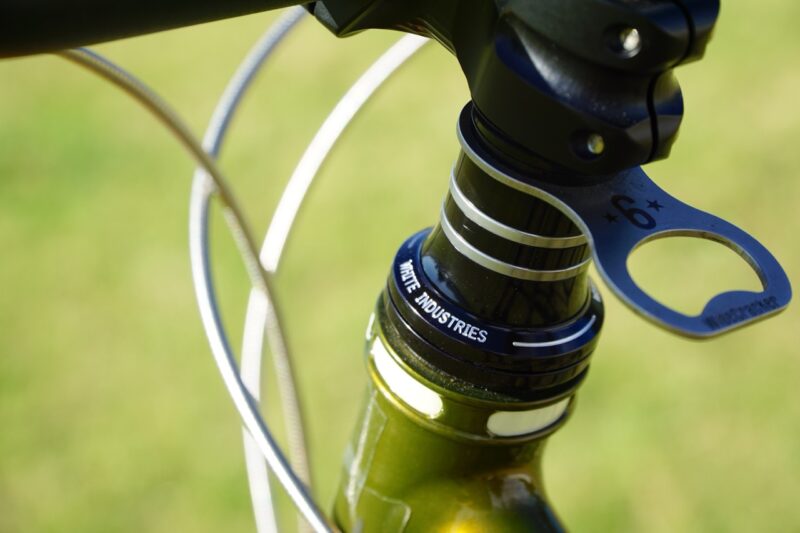
Looking on the White Industries website for a headset that would fit the Gus was pure relief. I didn’t have to check any new-fangled standards, or weird top and bottom cup combos. Just a standard headset for a 1 1/8″ head tube and straight steerer. The EC34/EC34 in black fit the bill perfectly. Boom, Bob’s yer Uncle.
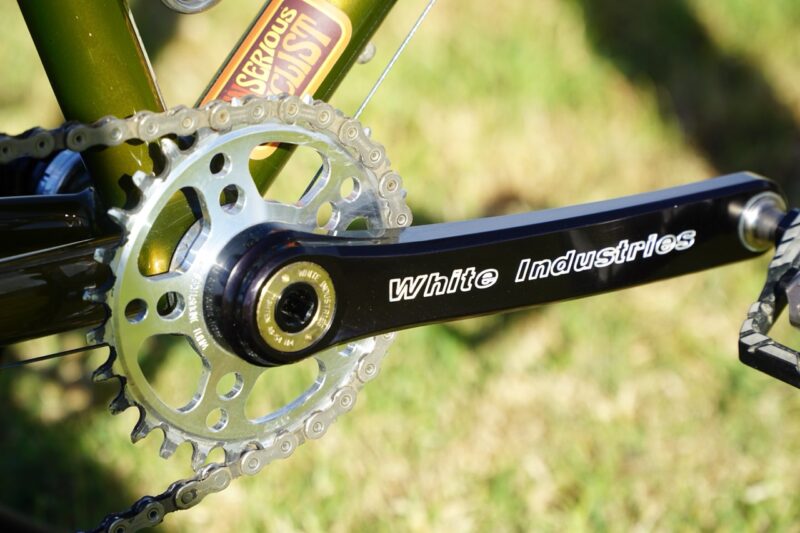
The crank arms are their M30 Cranks for mountain bikes. This was a simple choice as well, black anno, 30mm spindle, 175mm arm length, and a gold extractor cap… stayin’ classy. I’m running their 30t, silver MR30 TSR 1x chainring in the easy to choose, 3mm offset (standard/non-boost)
Everything from White Industries, not only installs without issue but operates and functions perfectly. I have a variation of this crank on all of my bicycles, and it doesn’t get any better.
And for the TSR (Tall-Short_Ring) 1X chain retention method is perfection. You can see the tall tooth popping up through the chain around the top of the chairing rotation.
Thomson:
Speaking of seatposts. The seat collar on the Gus is lugged and therefore is the less-than-popular 26.8-size. I could’ve used one of the Nitto or cheap Kalloy seatposts that Rivendell sells, but I wanted this build to be outstanding.
I mean, the Nitto options are really nice, but to me, being an older bike nerd, when I think of a high-end blingy seatpost, I think of Thomson seatposts. They are made very well, have been around forever, have that signature, ovalized inner diameter for strength, and have a cool-looking setback model. Not to mention they come in a plethora of sizes.
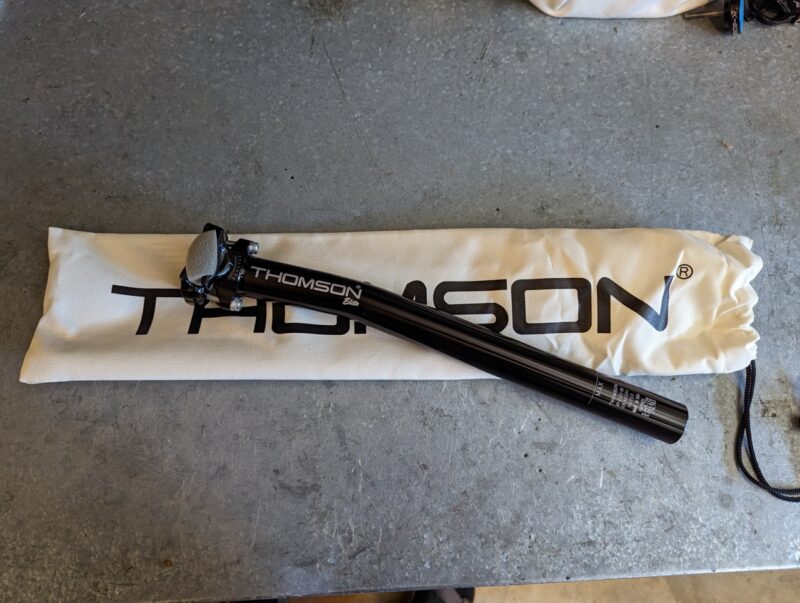
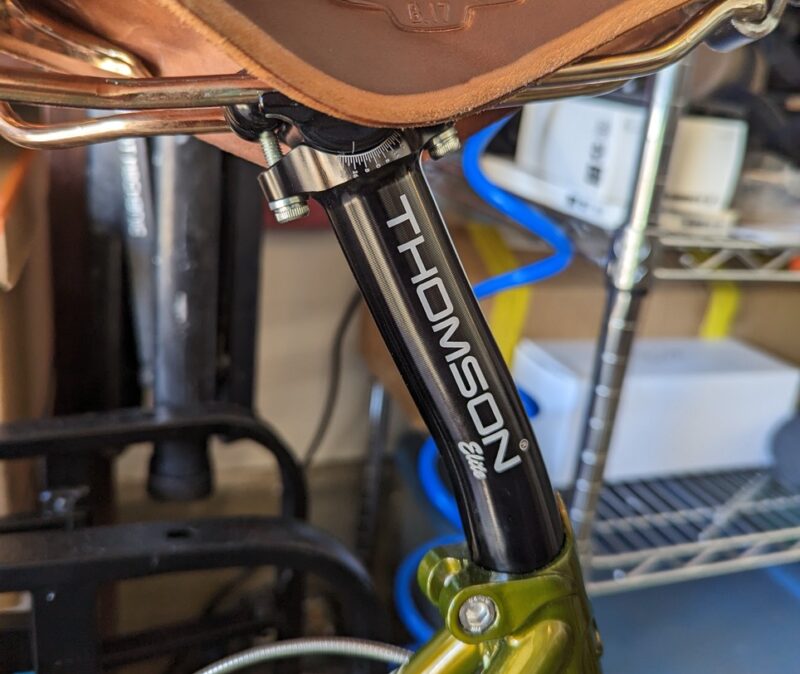
I requested an Elite Seatpost in the 26.8 x 330mm setback in black, and they delivered. I added a smidgen of Phil’s Waterproof Grease on the post and in the seat collar, and installation was eventless. Ahh… steel and aluminum, not a peep or budge in 300+ miles of offroad tomfoolery.
Forager Cycles:
I’ve said it before, but the details matter. And when it comes to going fast and looking really good, the Forager Cycles Cable Cherries will do the trick.
Here are a few benefits of the humble cable cherry…
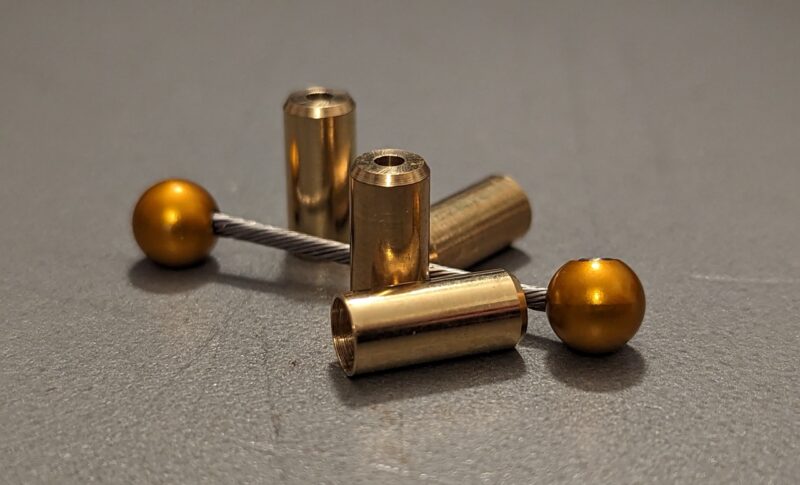
- No more crimps falling off your cable end, leaving you with those blood-letting cable strands.
- Makes a tasty handle for adjustments.
- Totally reusable.
- Guaranteed, if one happens to fall off, Forager Cycles will send you another one for free.
- CNCd in Washington and shipped in very minimal packaging.
I actually got these through Velo Orange. But you can get yours here.
Shimano:
Well, I needed a drivetrain right when Shimano needed someone to ride their new LinkGlide system. I had them send me the 11-speed, XT Linkglide gruppo for the build, plus they sent along a pair of XT Trail pedals as well.
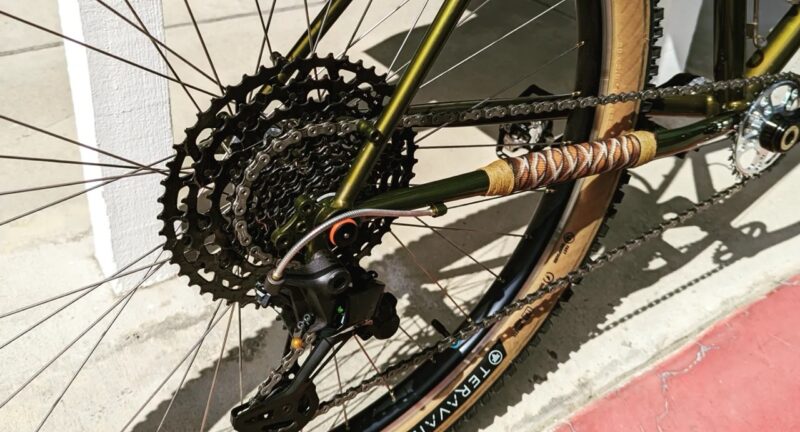
I will touch on some highlights of the system, but it will get its own separate review after I ride it for a couple hundred more miles.
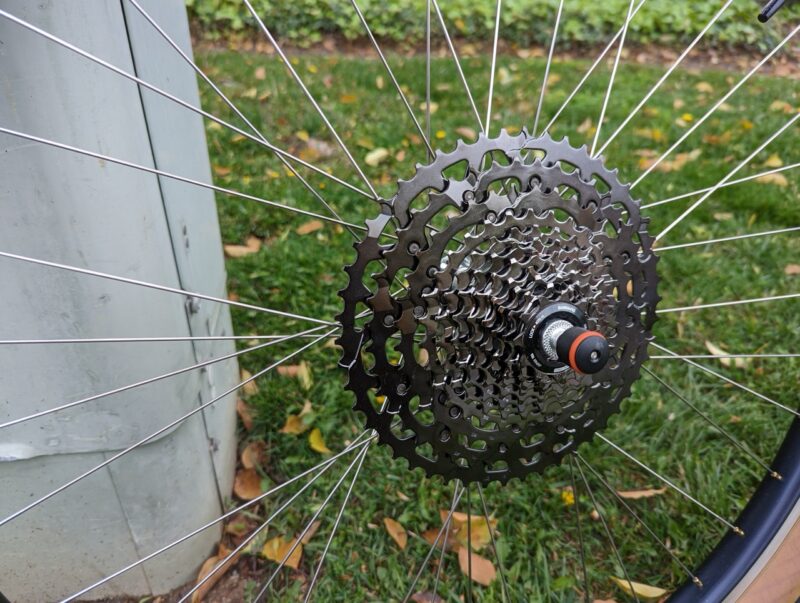
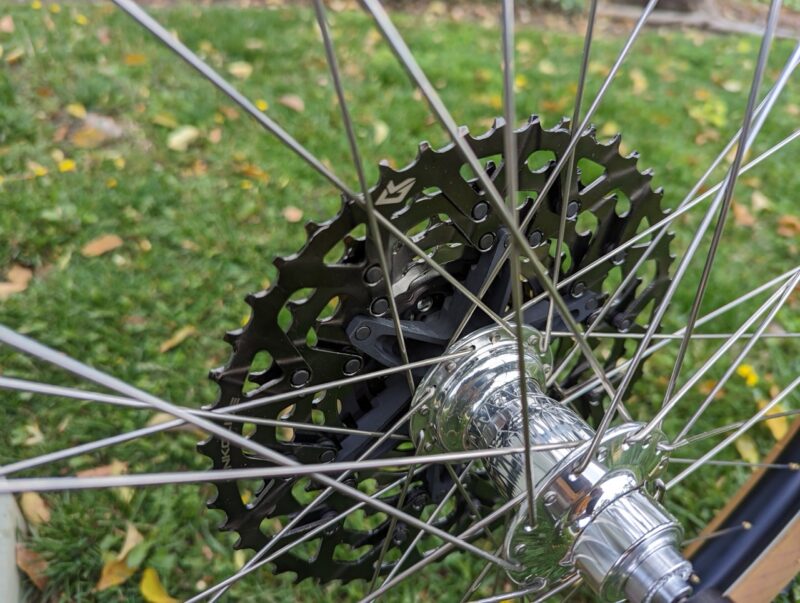
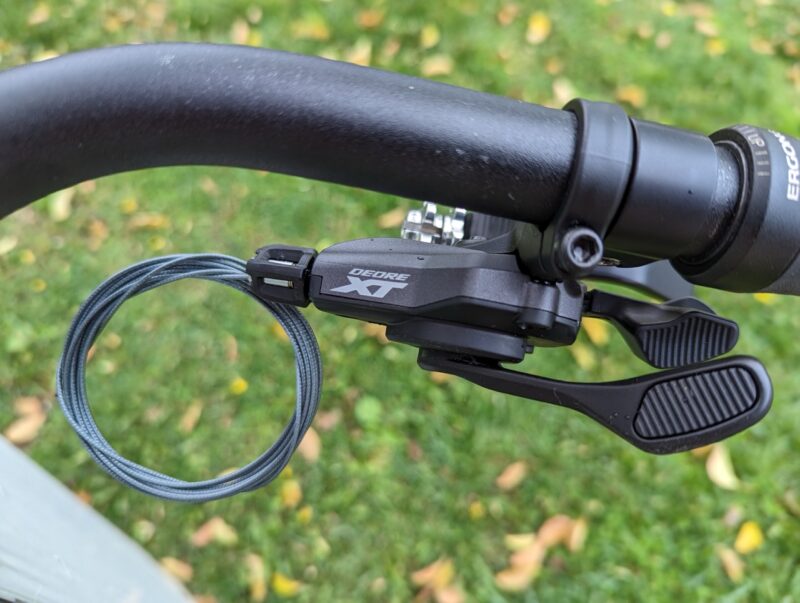
The XT LinkGlide system was designed to be extremely robust and durable. It has different shift ramps on the 11-50t rear cassette, allowing a completely different and smoother shift point when under load.
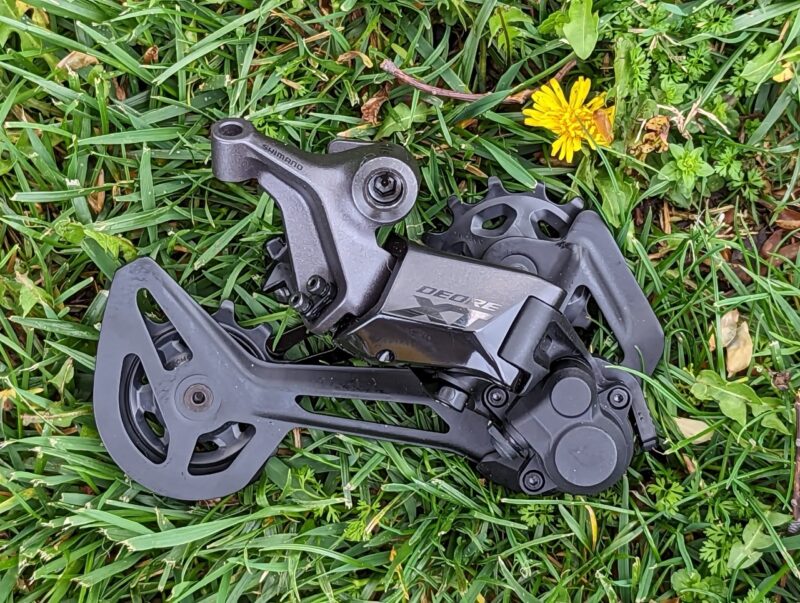
The rear derailleur has a new geometry and will not play well with the current XT 11-speed Hyperglide.
So far, it’s been a pleasant experience. There are some things I like about it and some things that aren’t so great. But, we’ll get into that in the actual review.
How My Gus Rides
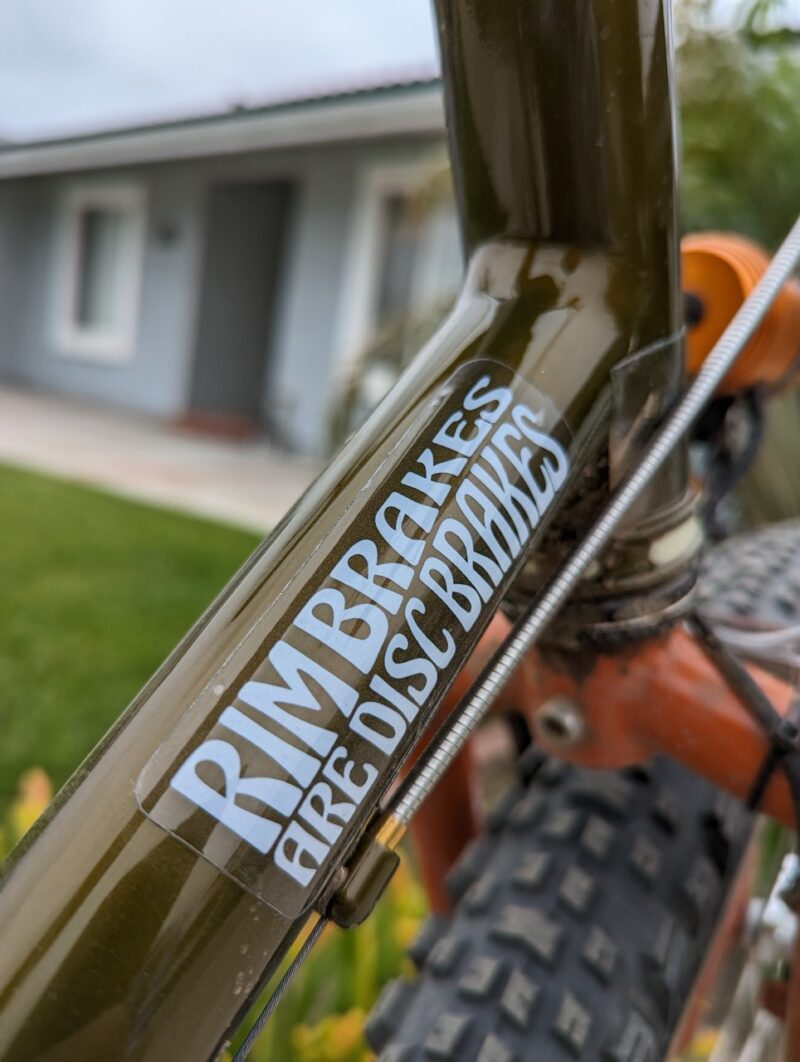
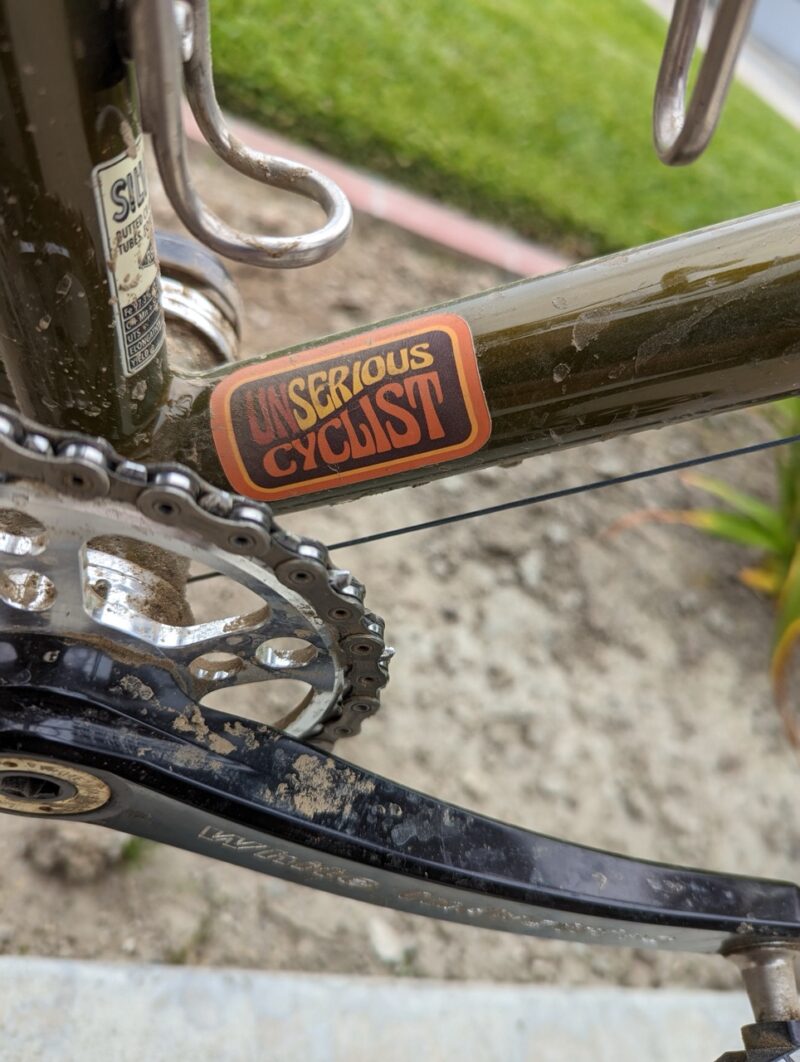
I’m sure you noticed that the Gus has long chainstays. You’re right, they are just shy of 550mm. That measurement makes this bike super stable in all aspects of its ride. It climbs very well, even the punchy steep stuff. It descends well. It’s very compliant without a lot of lateral compliance.
I’m finding that the long chainstays actually mean a more stable climb, not the opposite like we’ve all been told. I sat upright and comfortable and motored up one of the short and steep (20+ percent) climbs that I’ve ridden consistently for the last 20+ years and was in total control.
What’s Up with Those Chainstays?
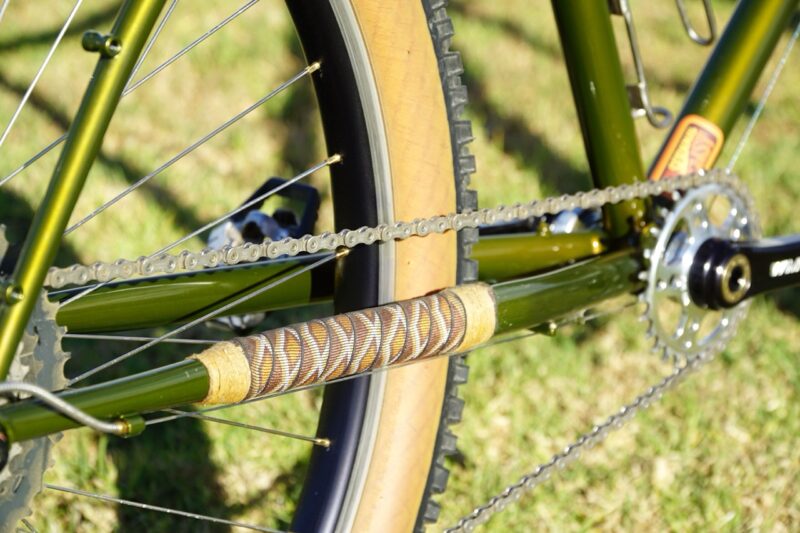
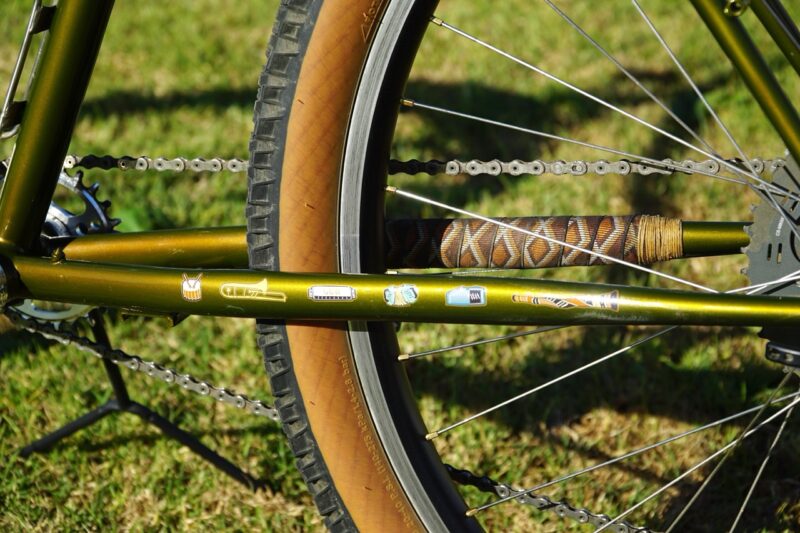
When I arrived at the top, I found myself not nearly as winded as I usually am. I didn’t need to constantly adjust my body weight up over the nose of the saddle to keep my front end on the ground, like I had to with my Krampus. And on the Gus, if there was an obstacle, I just easily steered around it.
Hmm, long chainstays, go figure.
The ride quality is second to none, I have never ridden a fully rigid mountain bike that was as comfortable as the Gus. Its compliance seems to help it corner well, as it kind of “settles in” to the corner, even in the looser stuff. The Ehlines help a lot in that regard.
The purposeful and elegant bend of the fork when paired with the Ehline supple tire, at about 19-20psi offered a nice supple ride. Add those long chainstays and it rides amazingly, offering its own “suspension”.
The ride position is very upright, it’s not for everyone. The sloping top tube is no slope-ier than say a modern enduro bike, it’s just got more of a curve, leading to the conclusion that the slope was just done more elegantly.
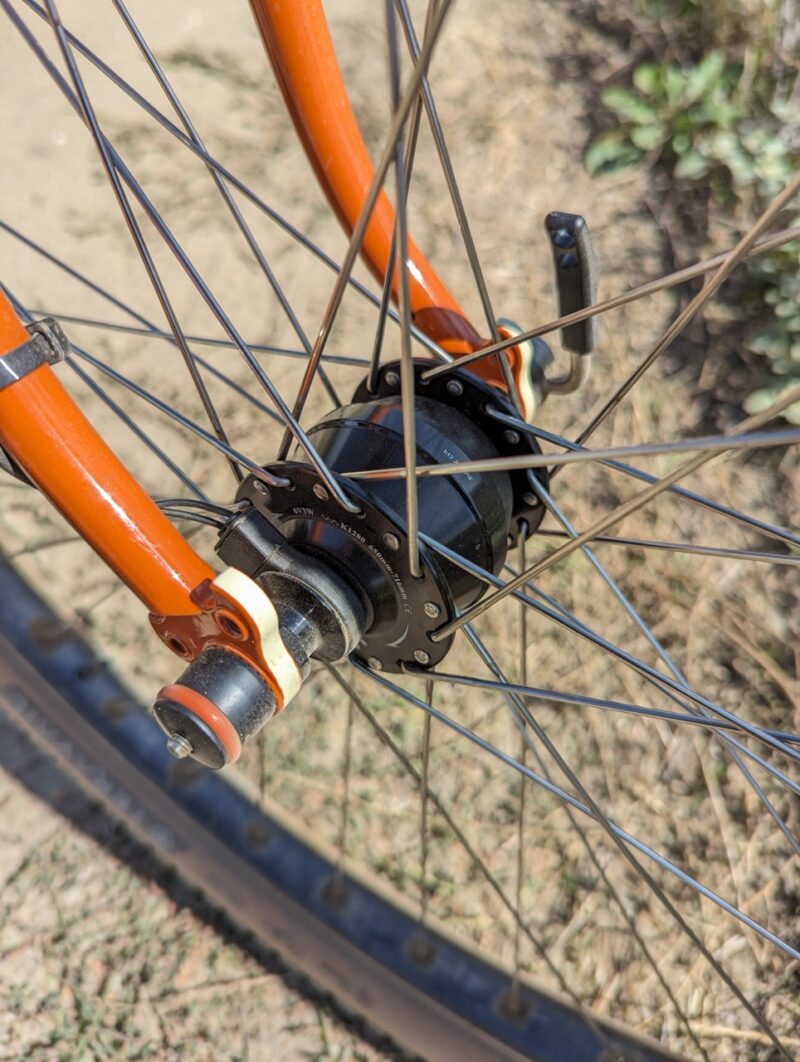
I love everything about the bike. The quirky decals and hand-painted highlights around the beautiful lugs and fork are that “something different” I was looking for.
The construction of the bike is of very high quality. You can’t really mass-produce a fillet brazed bicycle frame, and it shows in the brazing and construction of the Gus. This is a bike that was built with longevity in mind and will, more than likely last for a very long time.
In Conclusion
The Rivendell Gus Boots Willsen retails for $2000, which includes the frame, fork, seatpost, and headset.
I couldn’t be happier with my purchase of this frameset. While I really loved my Surly Krampus, the Gus offers a different experience. I can accomplish the same kind of riding as the Krampus… but with Gus’ own kind of style.
It’s a bit slow to react on tight single track, but barely. Not a deal breaker at all. I can still shralp the sh*t out of one of my fave spots and have a blast doing it.
The Gus Boots Willsen is that special bike that is like nothing on the market, and like nothing you’ve ever ridden. Gus is both beautifully elegant and purposefully rugged all at once. And it rides like that.
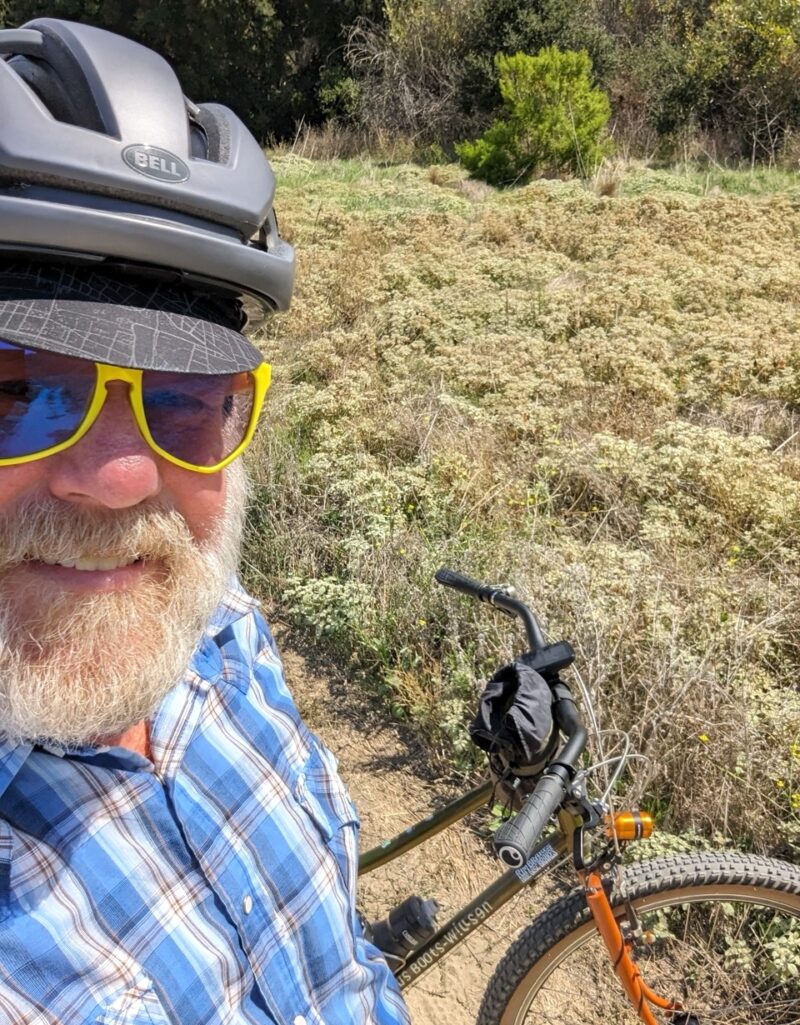
I think Grant nailed the design of this bike. It is purpose-built for climbing, singletrack, long bikepacking trips, short dirt loops, or taking it to go get groceries. It’s built to be a lifetime bike for a bikey type lifestyle. It is a bicycle that is built for fun and frolicking in the dirt or wherever you see fit, and that’s really what it’s all about.
